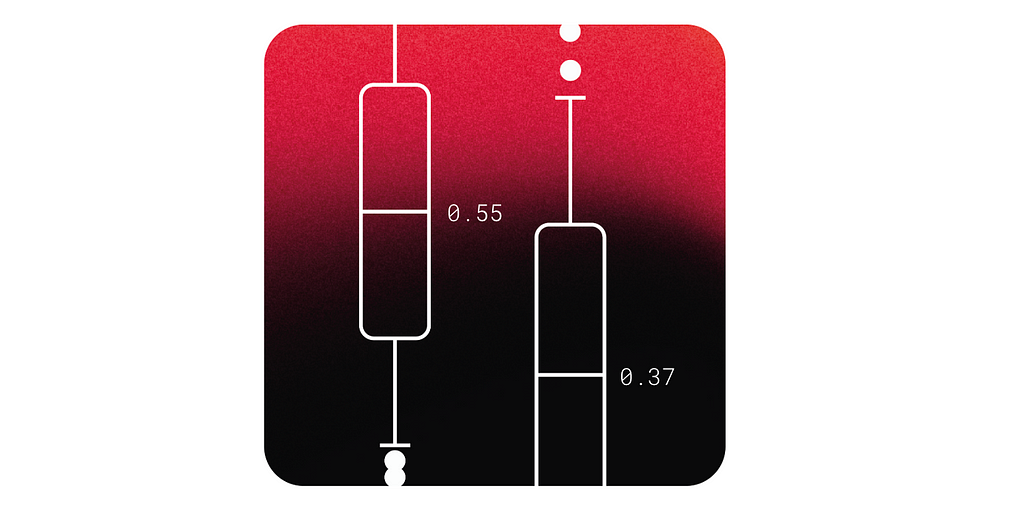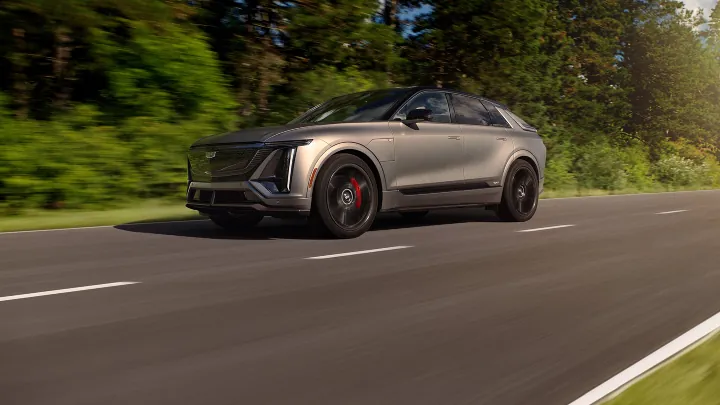Best Thunderbolt docks 2025: Extend your laptop’s capabilities
A great docking station for laptops is now a must-have accessory, providing high-speed I/O access for mice, keyboards, external drives, and more. The industry is transitioning away from Thunderbolt 3 and embracing Thunderbolt 4. Thunderbolt 5 (on the PC) is here, but not quite ready for prime time. You can call it a laptop dock, a laptop docking station, a USB 4 dock, or a Thunderbolt dock; they’re basically the same thing, and this buying guide covers them. Both Thunderbolt docks and the best USB-C hubs and dongles provide legacy ports (USB-A, microSD, and others), and connect PC peripherals like mice, printers, external hard drives, and more. A Thunderbolt dock has traditionally been the faster, more powerful option, however, supplying enough bandwidth via the Thunderbolt port to drive a pair of 4K displays and charge your phone. My recommendations for the best laptop docking stations begin with my top picks, followed by budget and premium options. I also include my favorite DisplayLink USB-C docks — a simpler, cheaper docking station that you should consider. If you need more help, I’ve included a FAQ designed to answer your questions, as well as information on up-and-coming technologies such as Thunderbolt 5 and the slightly odd Thunderbolt Share. At CES 2025, I asked why Thunderbolt 5 was basically a no-show. The answer surprised me! Why you should trust me: PCWorld has been testing PC hardware since the 1980s, and I’ve been a technology journalist for 30 years. I first began testing Thunderbolt docks in early 2021, and have reviewed over 40 Thunderbolt docks to date. My reviews of Thunderbolt docks, DisplayLink docks, and USB-C hardware are extensive, and I frequently review additional docks or hubs as contenders for recommendation. I also use input from reviews on PCWorld’s sister sites Macworld and TechAdvisor to help inform my recommendations. Kensington Thunderbolt 4 Dual 4K Dock (SD5780T) – Best overall Thunderbolt dock Pros Solid performance No thermal issues Pretty solid mix of ports, including downstream Thunderbolt 4 Price cuts have helped make it more affordable Cons Rear USB-A ports deliver less power than expected One display port, requiring an additional dongle for two displays No dedicated phone charging port, but Thunderbolt can do it Why I like the Kensington SD5780T One of my testing credos is “affordable flexibility,” and I favor a dock that will fit into your existing setup. But I also don’t want you to pay through the nose for it. There are other docks that allow you to get by without using a display adapter, but they generally charge for it — sometimes even $100 more. The SD5780T has one dedicated display port, and you’ll have to buy a $15 USB-C adapter cable to support a second. That’s cheaper than the alternative. The Kensington SD578OT is a solid Thunderbolt 4 dock in all respects. For those who wish to use a single 4K monitor, chances are that you’ll already own an HDMI cable. In my tests, the dock was stable (and not all are!) with a nice port selection. The dock will charge your smartphone, albeit with a USB-A port. The bottom line: This is currently the best combination of value and features in a Thunderbolt dock that I’ve tested. Who should buy the Kensington SD5780T The SD5780T is an ideal “starter” dock, for someone who has a laptop and a single external display and might want to add more in the future. Adding a second display will require the purchase of a USB-C (Thunderbolt) to HDMI cable, which will cost an additional $15 or so. The inclusion of the SD card slot should appeal to photographers who record photo or video on those cards. Read our full Kensington Thunderbolt 4 Dual 4K Dock (SD5780T) review Wavlink Thunderbolt 4 Triple Display Docking Station – Best overall Thunderbolt dock, runner-up Pros An efficient use of ports Affordable 30W charging port in front Triple display capable Why I like the Wavlink Thunderbolt 4 Triple Display Docking Station I’m relying on our sister site, Macworld, and their review of the Wavlink Thunderbolt 4 Triple Display, which isn’t something I normally do. (I do h

A great docking station for laptops is now a must-have accessory, providing high-speed I/O access for mice, keyboards, external drives, and more. The industry is transitioning away from Thunderbolt 3 and embracing Thunderbolt 4. Thunderbolt 5 (on the PC) is here, but not quite ready for prime time.
You can call it a laptop dock, a laptop docking station, a USB 4 dock, or a Thunderbolt dock; they’re basically the same thing, and this buying guide covers them. Both Thunderbolt docks and the best USB-C hubs and dongles provide legacy ports (USB-A, microSD, and others), and connect PC peripherals like mice, printers, external hard drives, and more. A Thunderbolt dock has traditionally been the faster, more powerful option, however, supplying enough bandwidth via the Thunderbolt port to drive a pair of 4K displays and charge your phone.
My recommendations for the best laptop docking stations begin with my top picks, followed by budget and premium options. I also include my favorite DisplayLink USB-C docks — a simpler, cheaper docking station that you should consider. If you need more help, I’ve included a FAQ designed to answer your questions, as well as information on up-and-coming technologies such as Thunderbolt 5 and the slightly odd Thunderbolt Share. At CES 2025, I asked why Thunderbolt 5 was basically a no-show. The answer surprised me!
Why you should trust me: PCWorld has been testing PC hardware since the 1980s, and I’ve been a technology journalist for 30 years. I first began testing Thunderbolt docks in early 2021, and have reviewed over 40 Thunderbolt docks to date. My reviews of Thunderbolt docks, DisplayLink docks, and USB-C hardware are extensive, and I frequently review additional docks or hubs as contenders for recommendation. I also use input from reviews on PCWorld’s sister sites Macworld and TechAdvisor to help inform my recommendations.
Kensington Thunderbolt 4 Dual 4K Dock (SD5780T) – Best overall Thunderbolt dock

Pros
- Solid performance
- No thermal issues
- Pretty solid mix of ports, including downstream Thunderbolt 4
- Price cuts have helped make it more affordable
Cons
- Rear USB-A ports deliver less power than expected
- One display port, requiring an additional dongle for two displays
- No dedicated phone charging port, but Thunderbolt can do it
Why I like the Kensington SD5780T
One of my testing credos is “affordable flexibility,” and I favor a dock that will fit into your existing setup. But I also don’t want you to pay through the nose for it. There are other docks that allow you to get by without using a display adapter, but they generally charge for it — sometimes even $100 more. The SD5780T has one dedicated display port, and you’ll have to buy a $15 USB-C adapter cable to support a second. That’s cheaper than the alternative.
The Kensington SD578OT is a solid Thunderbolt 4 dock in all respects. For those who wish to use a single 4K monitor, chances are that you’ll already own an HDMI cable. In my tests, the dock was stable (and not all are!) with a nice port selection. The dock will charge your smartphone, albeit with a USB-A port. The bottom line: This is currently the best combination of value and features in a Thunderbolt dock that I’ve tested.
Who should buy the Kensington SD5780T
The SD5780T is an ideal “starter” dock, for someone who has a laptop and a single external display and might want to add more in the future. Adding a second display will require the purchase of a USB-C (Thunderbolt) to HDMI cable, which will cost an additional $15 or so. The inclusion of the SD card slot should appeal to photographers who record photo or video on those cards.
Wavlink Thunderbolt 4 Triple Display Docking Station – Best overall Thunderbolt dock, runner-up

Pros
- An efficient use of ports
- Affordable
- 30W charging port in front
- Triple display capable
Why I like the Wavlink Thunderbolt 4 Triple Display Docking Station
I’m relying on our sister site, Macworld, and their review of the Wavlink Thunderbolt 4 Triple Display, which isn’t something I normally do. (I do have this dock in hand, however, and it’s next in line for review!) But I’m impressed by the extremely affordable price of this dock and its very focused mix of ports. This dock doesn’t compromise, with two HDMI ports that do not require an adapter.
Focus is really the key here. With two display ports, a dedicated 30W charging port, and a mix of other I/O (including SD and microSD), this dock offers what you’ll need and not much more. That helps hold down the cost. I do want to run my own tests for stability and performance, but this is a dock you should be looking at when considering your next purchase.
Who should buy the Wavlink Thunderbolt 4 Triple Display Docking Station
Our best picks are designed for everyone, but this dock offers the most value of our top two recommendations. You won’t even need a display cable.
This dock works best on a desktop, as part of a permanent docking station. It doesn’t seem to include a vertical mounting stand to save space, but it’s pretty compact, anyway.
Anker 568 USB-C Docking Station – Best budget Thunderbolt dock

Pros
- Two ports for fast-charging smartphones
- Solid value
- Eighteen-month warranty
Cons
- Occasional instability
Why I like the Anker 568 USB-C Docking Station
Anker’s 568 is a USB 4 docking station, the more open industry-standard version of a Thunderbolt dock. It will work fine with your laptop, regardless — I’ve tested it. This category used to belong to the Belkin Thunderbolt 3 Dock Core, a tremendous travel dock, but it’s being phased out.
This dock sometimes wanders out of the budget category, for some reason. But it generally hovers around the $150 price range. It offers premium-like capabilities, however, with multiple display ports. Everything is well labeled. Anker also has a solid reputation, and there’s a great 18-month warranty if you need more reassurance.
This dock was generally stable, although I noticed an occasional flicker. Fortunately, Anker is one of the few dock makers to ship its docks with a firmware utility that can download updates and squash bugs. I do like that.
Who should buy the Anker 568 USB-C Docking Station
This docking station will do well for most setups, especially if you like to plug in your smartphone to charge while working.
Ugreen Revodok Pro 13-in-1 Triple Display Docking Station – Best budget Thunderbolt dock, runner-up

Pros
- Excellent performance
- Great value for the money
- Optimized build
- Completely stable
Cons
- Short, built-in cord
- You’ll need your own power supply/charger
- Requires a relatively modern laptop
Why I like the Ugreen Revodok Pro 13-in-1 Triple Display Docking Station
The only reason that this isn’t my pick for the best budget Thunderbolt docking station is because it appears to use a generic form of compression known as HBR3 (High Bit Rate 3) with DSC (Display Stream Compression), which is built into the DisplayPort spec. That’s a particular technology that is more common within recent Intel Core (and Core Ultra) laptops, but isn’t guaranteed to appear on yours. (If you own a laptop with a Thunderbolt port, though, this should work just fine.) You’ll also have to supply your own USB-C power cable.
Otherwise, this docking station has so much to offer. The price is outstanding, of course, but Ugreen’s dock is also so flexible yet so stable. Everything’s well labeled, and the dock offers DisplayPort as well as HDMI options. And it’s really quite portable, too. Just remember that charger.
Who should buy the Ugreen Revodok Pro 13-in-1 Triple Display Docking Station
I’d really recommend this dock for those who own laptops with 13th-gen Core hardware or above. HBR3/DSC technology really doesn’t work on older systems like 11th-gen Core hardware and older PCs. If you own an AMD Ryzen laptop, too, it may be a little iffy.
Kensington Thunderbolt 4/USB 4 Quad Video Docking Station (SD5800T) – Best premium Thunderbolt dock

Pros
- Rugged, well-engineered
- Can sit vertically on its stand to save space
- Yes, it works: Four 4K displays are possible
Cons
- Mislabeled USB-A charging port doesn’t deliver
- Average storage performance
Why I like the Kensington Thunderbolt 4/USB 4 Quad Video Docking Station (SD5800T)
If you have the means, I highly recommend picking up Kensington’s SD5800T. You may not need four displays, but many shoppers often feel like they want to buy a docking station and not have to worry about picking up a display adapter or cable. This dock does that.
One of the only reasons that I don’t recommend this dock as the overall favorite is the price tag. Aside from that, this was one of my favorites. About the only weakness is a lack of adequate smartphone charging from the USB-C port — a trait shared by its competitors, too, for some reason.
Why should buy the Kensington Thunderbolt 4/USB 4 Quad Video Docking Station (SD5800T)
Not everyone needs four displays, or has the laptop hardware to power them. This is for the “battlestation” enthusiast or someone who needs to be surrounded by information. But you might be a person who simply doesn’t want to have to deal with additional display adapters, either.
Plugable 5-in-1 Thunderbolt Hub (USB4-HUB3A) – Best Thunderbolt 4 hub

Pros
- Incredibly compact
- USB-C to HDMI adapter included
- 15W/60W of charging power to phones/PCs
Cons
- Limited ports
- Best for Thunderbolt-attached displays
Why I like the Plugable 5-in-1 Thunderbolt Hub (USB4-HUB3A)
How does a Thunderbolt hub differ from a Thunderbolt dock? In this case, there’s less of an emphasis on legacy ports, and more of a focus on a direct connection to a display. The Mac world tends to emphasize Thunderbolt-connected displays far more than the Windows world does, so this might be a niche product for most of you. But this thing is tiny (4.75 x 2.88 x 0.5 inches) even if, unfortunately, the associated power brick isn’t.
It will send 15W of power via the Thunderbolt/USB-C connections to charge smartphones, and 60W to the host PC.
If you don’t need a big, bulky dock with multiple connections, Plugable’s 5-in-1 Hub just does the job and without any extra fuss. If your laptop needs more power than the 60W Plugable hub provides, then I would recommend the Satechi Thunderbolt 4 Slim Hub Pro instead.
Who should buy the Plugable 5-in-1 Thunderbolt Hub (USB4-HUB3A)
Thunderbolt displays are prevalent in the Mac market, but this hub can be used for an emerging market of Thunderbolt/USB-C monitors. They’ll likely become more prevalent in the future.
But connecting a cable from each port on your laptop to each display is messy. You’d still like just one. The hub works as a “splitter” of sorts for the Thunderbolt connection.
Put another way, if you own a USB-C monitor, those displays tend to also have legacy ports (USB-A, USB-C) inside them, which means that a Thunderbolt dock and its cluster of ports may be redundant. This hub is a way to save a little money for the user who has a specific setup.
Razer Thunderbolt 4 Dock Chroma – Best Thunderbolt 4 hub, runner-up

Pros
- Rock-solid stability
- The only (?) dock with RGB lighting
Cons
- Average to slightly poor performance
- Lack of dedicated display ports
- A higher price tag than what rivals charge
Why I like the Razer Thunderbolt 4 Dock Chroma
I was surprised by how much I like this combination dock/hub. It’s a premium offering, with enough ports that I’d tend to consider it a full-fledged dock. But with three upstream Thunderbolt ports, you can characterize it as a hub as well. As one of the more modern docks, with rock-solid stability, it won me over in the end, though its storage performance was middling. And, of course, remember to invest in cables.
The RGB lighting is fun, and optional — it can be turned off. Frankly, our top pick, the Kensington SD5780T, shares a lot of the same functionality as both the OWC and the Razer docks, so price plays a factor here.
Who should buy the Razer Thunderbolt 4 Dock Chroma
Gamers, obviously. But even a stodgy old reporter like me likes it, because the RGB can either be fixed to a certain color or turned off entirely. And the dock surprised me with its stability and construction. You can certainly buy this dock for its blingy aesthetic, but it works just as well as a more down-to-earth alternative, too. Razer did a very nice job balancing both aspects.
Anker 568 USB-C Docking Station – Best USB 4 docking station

Pros
- Two ports for fast-charging smartphones
- Solid value
- Eighteen-month warranty
Cons
- Occasional instability on a second display or connected devices
Why I like the Anker 568 USB-C Docking Station
Two power ports on the front: They’re a delightful little detail that I wish other vendors would adopt as well. As you may have read elsewhere in this roundup, USB 4 and Thunderbolt 4 are basically identical, so you might be wondering why we’re even separating out this category. Well, if you’re a notebook owner with an AMD Ryzen chip inside, you might be looking for a dedicated dock, and this is a very good one. Quite frankly, this Anker 568 is in the running for the best overall docking station.
This 11-in-1 docking station favors DisplayPort, with two DisplayPort 1.4 ports, and a single HDMI 2.0 video port. The Anker 568’s distinguishing feature, however, is the pair of 10Gbps USB-C ports on the front, each supplying 30W of power as well as a separate 100W connection to the laptop. That’s quite unusual, and the two ports should fast-charge a smartphone and possibly even a tablet.
Who should buy the Anker 568 USB-C Docking Station
If you own a notebook with a Ryzen CPU inside, and you want the confidence that this dock has been tested to ensure USB 4 compatibility, this is the dock for you. You’ll also want to buy it if you charge multiple phones or use high-powered peripherals, such as a high-end SSD.
I really like this dock, and I’d recommend it to about anyone. It does lack microSD and SD card slots, though, which may rule it out for photographers.
Plugable USB4 Dual HDMI Docking Station (UD-4VPD) – Best USB 4 docking station, runner-up

Pros
- Great price and value, even at MSRP
- 4K120 display capabilities open up gaming possibilities
- Stable performance
- Excellent charging capabilities
Cons
- Significant thermal issues
- Storage tests across the dock were lower than average
Why I like the Plugable USB4 Dual HDMI Docking Station (UD-4VPD)
Plugable’s dock claims dual 4K120 capability, which unfortunately I wasn’t able to test at the time of the review. But the dock offered a stable connection to the connected devices, with the ability to charge smartphones as well. Anker’s 568 dock edges it out in price and slightly in display flexibility, but lacks the SD card slot that the Plugable includes.
Who should buy the Plugable USB4 Dual HDMI Docking Station (UD-4VPD)?
This is a general-purpose USB 4 dock, which can be adopted by anyone. But it’s best suited for laptops with a Ryzen chip inside, and for photographers that need the SD card slots that the Anker 568 doesn’t provide.
Sonnet Echo 20 Thunderbolt 4 SuperDock – Best Thunderbolt dock for Apple Mac users

Pros
- Thunderbolt 4
- 19 ports
- Built-in speedy SSD enclosure
- 100W PD
- 2.5 Gigabit Ethernet
Why Macworld likes the Sonnet Echo 20 Thunderbolt 4 SuperDock
This recommendation comes courtesy of our colleagues at Macworld, who have compiled their own list of best Thunderbolt docking stations for the Apple Mac market. “Boasting an impressive 19 top-rated ports, Thunderbolt 4 certified, and with a bonus internal SSD storage feature, the Sonnet Echo 20 Thunderbolt SuperDock offers remarkable value for money,” Macworld concludes.
I haven’t reviewed this dock myself, but there’s an undeniable surplus of ports, and an SSD enclosure. I suspect that this particular feature may become more common over time. And it’s reasonably priced, too.
Who should buy the Sonnet Echo 20 Thunderbolt 4 SuperDock
Think of this dock as a more full-featured version of our Thunderbolt 4 hub recommendation, above. Though this recommendation is targeted at Mac users, there’s no reason that an owner of a Windows PC couldn’t buy this dock, too. If you’re trying to save space on your desk but also want an external SSD, this hybrid dock could serve both needs.
Best DisplayLink USB-C docks
DisplayLink USB-C docks, which I discuss in more detail in a separate article, don’t offer enough bandwidth for high-refresh rate monitors or gaming, but they work admirably well for everyday office work, including watching movies. Anecdotally, they’ve often been more stable than a Thunderbolt dock on older hardware, as sometimes Thunderbolt docks have issues “waking up” when the host laptop wakes up from standby. You can “break” the dock by pushing more and more over the connection, like streaming while copying files.
What I’d like to see in a DisplayLink USB-C docking station is a feature set that approaches a full-fledged Thunderbolt dock, but that is priced below what you’d pay for Thunderbolt performance. The current pick does just that. Some recent reviews do not appear here — for instance, StarTech’s USB-C Triple Monitor Dock fell short.
Ugreen 9-in-1 USB-C (Revodok) Docking Station CM615 – Best USB-C DisplayLink dock

Pros
- Terrific price and value
- Excellent stability
- Great display port flexibility
- Support for two 4K60 displays
Cons
- Have to provide your own power supply
- Can warm to somewhat alarming temperatures
- Mandatory software driver
- A lack of naming consistency
Why I liked the Ugreen 9-in-1 USB-C (Revodok) Docking Station CM615
Like some of our premium Thunderbolt docks, Ugreen provides options to use either HDMI or DisplayPort to connect a display, allowing you to use your existing display cables and save some money.
Like most DisplayLink docks, this dock was unusually stable, with no flickering between displays — one of the reasons I like DisplayLink docks. Some other Thunderbolt docks offer the same flexibility to shift between monitors, but not many. Ugreen’s dock does so affordably.
Who should buy the Ugreen 9-in-1 USB-C (Revodok) Docking Station CM615
If you’re not worried about hunting down the proper software driver (because Ugreen, bless them, does not make it apparent that it needs one) than I would recommend that you buy this dock. It offers many of the features of more expensive Thunderbolt docks at an affordable price.
Sonnet Echo 13 Triple 4K Display Dock – Best USB-C DisplayLink dock, runner-up

Pros
- Top-notch performance
- Support for three 4K60 displays
- Solid value
- 20W of charging power for smartphones, 100W for laptop
- Exemplary documentation
Cons
- Direct display connection disconnected once
- Poor, glitchy intermittent audio
Why I liked the Sonnet Echo 13 Triple 4K Display Dock
Sonnet’s Echo 13 Triple 4K Display Dock follows the intriguing path other DisplayLink docks have blazed: The dock’s built-in compression means you can connect to three 4K displays, without penalty. And yes, it works as advertised, though with one issue that holds it back: spotty audio that really needs to be fixed. (If you use your laptop’s headphone jack, there’s no issue.)
There was a tiny bit of instability, but performance was excellent. And with 20W of charging power for your phone and 100W for your laptop, you’ll be able to power a wider range of laptop options.
Who should buy the Sonnet Echo 13 Triple 4K Display Dock
The price differential between the Sonnet and Ugreen docks should help answer that question: The Sonnet buyer is willing to pay a little more for what is really a well-made and well-documented dock, with clear instructions. Really, without the price differential and the audio issues, this would be the top dock in the category.
Other Thunderbolt reviews and features
- The biggest thing I didn’t see at CES: Thunderbolt 5: Thunderbolt 5 was a no-show, and insiders explain why.
- My first Thunderbolt 5 experience was a huge bust: I don’t know whether it was the cable, laptop, or dock, but my first taste of Thunderbolt 5 was a lot worse than I expected.
- Is Thunderbolt 5 storage ready? Thunderbolt 5 exhibits a marked improvement in sequential transfers, but our first look at the spec suffered some backwards-compatibility issues.
- Kensington’s first Thunderbolt 5 dock is built for the future: Thunderbolt 5 is here…but you’ll need more than just this well-built Kensington docking station to take advantage of it.
How I test Thunderbolt docks
A separate article goes into detail about how I test Thunderbolt docks. But here’s a short synopsis.
First, I take the dock from its packaging and evaluate its construction. I measure the Thunderbolt cord length and check the dock’s physical dimensions with a ruler.
I’ll then read the manual: Does the dock need any drivers? Are there links? What does the manual say about the dock’s capabilities in terms of power and speed?
Next, I take a USB key or two and connect them to the available USB ports to determine if they have enough space to allow several to be connected at the same time. I then examine the display ports, find the appropriate cables, and then connect the dock to the laptop. I use a series of laptops with various generations of AMD and Intel hardware, and check to see if the experience is the same on each one. If it isn’t, I make notes. I connect the dock to two 4K displays, running at 60Hz. For Thunderbolt 5 docks, I will use two 4K displays capable of 144Hz — that’s the limit of the technology.
I then measure the power output of the ports, using a USB multimeter, a smartphone, and a laptop to measure how much power the dock delivers to each.
Finally, I check to see how well the dock performs under load. I use a specific test laptop for this purpose for repeatable results. I stream a 4K60 YouTube video using the Ethernet port on the dock (if it has one) and note any dropped frames. I usually check with a pre-recorded 4K60 video running from an SSD.
I then run PCMark 10’s SSD storage benchmark off of a test SSD, connected to the dock. I measure the score, then measure the score again while streaming a video. I then copy a large, multi-gigabyte folder of various files from my laptop across the Thunderbolt bus and measure the time it takes to do so. I repeat the test while streaming video.
Finally, I check the operation and performance of any SD card slots the dock has and listen to audio through the audio jack, to make sure it works.
FAQ
How do I know if my laptop has Thunderbolt?
The short answer: Look at the laptop’s published specifications to be sure. A Thunderbolt port may look indistinguishable from a USB-C port, since they both use the same physical USB-C connection. Put another way, all Thunderbolt ports are USB-C, but not all USB-C ports are Thunderbolt-equipped.
Thunderbolt ports are supposed to have a small lightning-bolt icon to identify them. But some laptop makers use a similar lightning-bolt icon to indicate that a USB-C port can be used for charging your phone, and not for Thunderbolt. Laptop makers sometimes don’t want to clutter the clean lines of their products by adding additional logos, it seems. Fortunately, most laptops now choose to highlight their Thunderbolt capabilities, so the ports should be well-marked.
In June 2024, Intel held a technical session talking about its Core Ultra 200 (Lunar Lake) processor. One of the big changes Intel is making is to force laptop makers to a) cluster all of the older USB-C ports on one side of the laptop, away from the Thunderbolt and b) require the ports (including Thunderbolt) to be clearly labeled. That’s a small but important win for users.
USB4 is Thunderbolt’s more generic competitor, and USB4 docks and Thunderbolt docks are often interchangeable. The USB Implementor’s Forum is going to ask laptop makers to add a separate, different USB4 logo to laptops as well. This strikes me as unnecessarily confusing.

Two laptops, both with USB-C ports, and both with lightning-bolt symbols. Which laptop offers Thunderbolt? The top one, though it can be difficult to tell. Consulting the manufacturer’s specifications is your safest bet.
IDG
How fast is Thunderbolt?
Put simply, 40Gbps, for Thunderbolt 3 or 4.
Most USB-C ports are built on the second-generation USB 3.1 data-transfer standard, which transfers data at 10Gbps. Thunderbolt 3 and 4 ports, the most common standard, transfer data at up to 40Gbps. Thunderbolt 4 differs very slightly in that it supports a theoretical maximum of 32Gbps for external storage devices, but you probably won’t notice the difference.
Intel unveiled an 80Gbps version of Thunderbolt in 2024, called Thunderbolt 5, meaning that you’ll see Thunderbolt docks with even more capabilities. In certain scenarios, Thunderbolt 5 can reroute data to deliver 120Gbps in one direction. About two (as of this writing) laptops have been announced with a discrete Thunderbolt 5 chip inside: a version of the Razer Blade and the Maingear ML-17. We also have one Thunderbolt 5 dock that’s shipped, too.
There is also a USB 3.2 Gen 2×2 spec that can pair two 10Gbps channels together, creating an aggregate 20Gbps hub. (This is really only for external gaming-class SSDs.) And while the vast majority of Thunderbolt 3-equipped laptops are designed with four PCIe lanes for a total of 40Gbps, some laptops only ship with two PCIe lanes for a total of 20Gbps. You don’t need to worry about this.
What should I buy: Thunderbolt 3, Thunderbolt 4, or Thunderbolt 5?
Buy either a Thunderbolt 3 or Thunderbolt 4 dock for now. They’re essentially the same thing, and you can score a deal as retailers continue to clear out old Thunderbolt 3 inventory.
Thunderbolt 5 is the 80Gbps version, but it will be backwards compatible with both Thunderbolt 3 and 4. With only a handful of laptops that support the spec and just a single dock that does, Thunderbolt 5 isn’t something to worry about quite yet. I’ve even tested a Thunderbolt 5 setup, and didn’t like it. Even the Thunderbolt ecosystem doesn’t seem convinced that Thunderbolt 5 will become a thing for a couple of years.
For the sake of completeness, we’re going to detail some of the differences below. But if you’re new to this, let us reiterate: Thunderbolt 3 and 4 are basically the same, and Thunderbolt 5 won’t be an issue until after 2025.
Think of Thunderbolt 4 as the more restrictive version of Thunderbolt 3, with less room for any gotchas.
Essentially, Thunderbolt 3 and Thunderbolt 4 allow up to 40Gbps maximum bandwidth, enough for two 4K/60 displays. “Up to” is the key phrase: Thunderbolt 3 is only required to support a 10Gbps connection, allowing for a single external 4K display (a 16Gbps PCIe connection, paired with USB 3.2). Most manufacturers go beyond this, however, and our recommended docks support the full 40Gbps specification (and two 4K displays) unless noted. Thunderbolt 3 also supports a slower (16Gbps) PCIe connection for connecting to external storage.
Thunderbolt 3 is also the only specification (not Thunderbolt 4) that we’ve seen connecting to external GPUs, in case you’d like to try that approach.
Thunderbolt 4 doesn’t allow for any leeway—you’re getting a full-fledged 40Gbps connection (32Gbps PCIe + USB 3.2), no questions asked. For external storage, Thunderbolt 4 supports 32Gbps of data transfer—this really only matters for video, external GPU connections, or possibly games. Thunderbolt 4 supports “wake on sleep” from an external keyboard or mouse, which allows you to tap your external keyboard or wiggle your mouse to wake up your PC, which is handy. Thunderbolt 4 allows for longer cables and more Thunderbolt ports on laptops, too.
Device maker Anker has a nice table of all of the technical features associated with Thunderbolt 3, Thunderbolt 4, and USB4, if you really want to get into the fine distinctions (below). What’s USB4? We address that further down.
I already own a USB-C dongle. Can I use it with Thunderbolt?
Yes, you can connect the dongle to a Thunderbolt port. But the 10Gbps dongle won’t magically transform into a 40Gbps Thunderbolt port, as there’s circuitry within the dock that allows it to work with your laptop’s high-speed Thunderbolt port. However, there’s nothing saying that you can’t connect the dongle to an available USB-C port on the Thunderbolt dock itself, either. If your laptop has two Thunderbolt ports, you can also attach a Thunderbolt dock to one port, and the dongle to the other.
That solution will add more clutter to your desk, but it might allow you to buy a cheaper, budget dock, too. It’s up to you!

Thunderbolt dock and I/O hub designer Anker provided this summary of the differences between Thunderbolt 3 and Thunderbolt 4.
Anker
My laptop says it has a USB4 port, not Thunderbolt. Can I use it with a Thunderbolt dock?
Probably. USB4 ports typically appear on laptops with AMD Ryzen processors inside. USB4 and Thunderbolt 4 are compatible and functionally equivalent. (Though Thunderbolt is an open standard, Intel declines to certify non-Intel hardware. That means that Ryzen laptops end up with USB4 ports, and Intel Core laptops include Thunderbolt.)
USB4 is essentially a subset of Thunderbolt 4, mainly designed as an an I/O specification.
As a subset of Thunderbolt 4, a USB4 device will run just fine plugged into a Thunderbolt 4 port. But dock makers tell us that a Thunderbolt 4 device may not work as expected when plugged into what is specifically a USB4 port. Instead, most hubs and docks are marketed as Thunderbolt 4, while most devices (like an external SSD) are designed around USB4. (We test Thunderbolt docks on Thunderbolt laptops.) There are USB4 docks, however, which you’ll find above in our list of best picks.
USB4 Version 2 is a standard that will propel USB4 to 80Gbps, just like Thunderbolt 5. I haven’t seen any docking stations marketed as USB v2 (also known as USB80Gbps), however.
Note that Thunderbolt 3 and 4 require at least 15W to power devices plugged into the Thunderbolt port, such as a bus-powered hard drive. USB4 requires just half that.
I did try to connect a Thunderbolt 5 dock to a USB4 laptop, and it didn’t work. It should! It may just be a driver issue.
What is so important about Thunderbolt 5?
The Thunderbolt 5 spec pushes I/O bandwidth from 40Gbps in Thunderbolt 4 to 80Gbps in Thunderbolt 5, and even to 120Gbps in some cases. Another good way to think of Thunderbolt 5 is in the context of what it can do. Thunderbolt 4 allows enough bandwidth for two 4K displays, running at 60Hz. Thunderbolt 5 will offer enough bandwidth to connect to three 4K displays, at 144Hz apiece. That helps make Thunderbolt 5 a gaming-class technology, rather than just for office work.
Thunderbolt 5 will also allow for 64Gbps of dedicated bandwidth for storage and external GPUs, double the 32Gbps on Thunderbolt 4.
Finally, there’s power. Thunderbolt 5 will provide up to 240W (140W required) of charging power for your laptop. Most laptops require 65W to 90W today, but gaming laptops require more. All this means is that a Thunderbolt 5 dock will potentially eliminate the need to carry a gaming laptop’s charger around. (It won’t be in all cases, but some.) Note that you’ll need a laptop that supports this power spec, however!
And that’s the problem. Thunderbolt 5 debuted in 2024, both in laptops as well as docks and devices. Although we saw a couple of early products at CES 2024, we’ve only seen two TB5 laptops as of this writing: a version of the Razer Blade and the Maingear ML-17. Both have discrete chips inside, rather than being directly integrated inside the processor. One Thunderbolt 5 dock has shipped, the Kensington SD5000T5. I tried a Thunderbolt 5 setup, and it stunk.
Why does that matter? If a function like Thunderbolt 5 isn’t built right into the processor, a laptop OEM must buy it separately. That takes time, money, and engineering, and most laptop makers think hard before spending extra. There are a few Thunderbolt 5 docks, but hardly any laptops that support it. At CES, I was told that it may take a couple of years for Thunderbolt 5 to really go mainstream — 2026 or maybe 2027.
Thunderbolt 5 isn’t integrated into Intel’s Lunar Lake mobile processor, and it’s not in the desktop or mobile versions of Arrow Lake, either. Maybe Panther Lake? However, the first Thunderbolt 5 cable debuted recently, though some of the cable lengths are probably too short to be practical.
What is Thunderbolt Share? How does it work?
Thunderbolt Share is a new way of connecting two PCs via a Thunderbolt cable. Plug one end of the cable into one Thunderbolt port, and the other into a Thunderbolt port on another laptop, and voila! They’re connected. Thunderbolt Share allows you to use one PC to control another, sync files, share files, and more, all at Thunderbolt speeds. I explain Thunderbolt Share and test it, here.
It sounds simple, easy, and powerful, but it’s more complicated than that. Both PCs have to run Intel’s Thunderbolt Share software, and you’ll only be able to get that from a licensed PC or Thunderbolt dock. Thunderbolt 4 and Thunderbolt 5 will run Thunderbolt Share, but not Thunderbolt 3 — well, officially. The same goes for USB 4; it might work, and it might not. Intel isn’t saying.
Thunderbolt Share will be supported by a handful of PC makers as well as dock makers like Belkin, Plugable, and more. But you know what? The announcement kind of came and went. I’m not betting on Thunderbolt Share being more than a gimmick right now. I didn’t really see it make an appearance at CES 2025, either.
What cable should I use with a Thunderbolt dock?
Virtually every Thunderbolt dock will ship with its own cable. We recommend that you use Thunderbolt 3 cables with Thunderbolt 3 products, and Thunderbolt 4 cables with Thunderbolt 4 products. Ditto for the first Thunderbolt 5 cables, when the technology ships in 2024.
My Thunderbolt docking station only has Thunderbolt connections, but I need to connect it to my monitor. How can I connect a Thunderbolt dock to my HDMI display?
You’ll need a special USB-C to HDMI cable, rated for Thunderbolt speeds. I recommend and have purchased this Uni Thunderbolt to HDMI cable from Amazon, which is about $16. You can find cheaper options, but make sure they’re rated for either Thunderbolt or a 4K@60Hz display.
What differentiates a DisplayLink USB-C docking station from a Thunderbolt dock?
A DisplayLink USB-C docking station is a new category of docking station. They’re often marketed just as a USB-C docking station, unfortunately, though the DisplayLink logo features prominently on the box. The key here is that the DisplayLink technology (now owned by Synaptics) uses data compression between your PC and the dock to approximate a Thunderbolt experience (a pair of 4K displays at 60Hz, plus additional peripherals) across the narrower, slower USB-C bus. You’ll need to install a software driver for your PC to communicate with the DisplayLink chip built into the dock.
The advantage here is twofold. First, DisplayLink allows you to “cheat” and get a Thunderbolt dock experience on an older laptop. Alternatively, even if you do own a laptop with a Thunderbolt port, you may be able to find a DisplayLink USB-C dock for a cheaper price than Thunderbolt. This is a viable solution, especially if you don’t mind not playing PC games.
Our separate story on DisplayLink docks has more.
What is HBR3 with DSC?
We’re starting to see some USB-C docking stations take advantage of another technology: HBR3 (High Bit Rate 3) with DSC (Display Stream Compression). Think of it as the industry-standard, manufacturer-agnostic version of DisplayLink. It works over the USB-C port, and again provides a dual 4K60 display experience.
The problem? It’s wonky. We’ve found that support for the technology was very iffy in 11th-gen hardware, and really seems to work consistently in 12th-gen or 13th-gen Core laptops (and above, when they ship). It’s becoming more common, however, and works more stably in the most recent Intel Core laptops.
Can I use an external graphics card (eGPU) with Thunderbolt?
With Thunderbolt 3? Yes, you can. Certain manufacturers (Razer is one, though there are others) have built enclosures that can house a standard desktop graphics card, connected to your laptop via a Thunderbolt cable. Although a mobile gaming laptop with an external GPU does a good job enabling mobile gaming, a desktop GPU does even better. Thunderbolt simply connects the two.
External GPU support sort of skipped Thunderbolt 4, however, and I would recommend using a Thunderbolt 3 dock instead, or wait until Thunderbolt 5. How can you hook up an external GPU to your laptop via Thunderbolt? Our story has more.
The only eGPUs I’ve seen with Thunderbolt use Thunderbolt 3, not Thunderbolt 4. Why is that?
According to a representative for Razer, the differences between Thunderbolt 3 and Thunderbolt 4 were too small. “When we release any product, we only do so when there can be a material advantage over the previous generation,” we were told.
Since Thunderbolt 4 was backwards compatible and functionally equivalent to Thunderbolt 3, Razer simply declined to invest in the production and testing of a Thunderbolt 4 eGPU. We presume other manufacturers followed suit.

The vast majority of Thunderbolt docks should include a Thunderbolt cable like this one, which indicates that it’s specified for Thunderbolt 3.
IDG
Buying guide: What to look for in a Thunderbolt dock
Ports, cables, peripherals: Those are the three major considerations when buying a Thunderbolt dock.
I like a Thunderbolt docking station that’s powered sufficiently to power my laptop. Virtually every dock ships with a Thunderbolt cable. But consider the displays you own (with typically HDMI or DisplayPort connections) and consider whether the dock will accommodate them. I prefer docks with dedicated display ports, so that a display with an HDMI port, for example, can connect directly. I am seeing a small but growing percentage of Thunderbolt docks that include a Thunderbolt cable to your laptop and then dedicated Thunderbolt connections out to displays. These docks tend to cater to Mac users. However, you can buy a dongle or cable that converts Thunderbolt/ USB-C to HDMI or DisplayPort, or else you can buy a USB-C display.
Basically, consider what you’ll want to plug into the dock as a guide for buying one. Ask yourself: Do you want a basic Thunderbolt dock, with just a pair of HDMI ports for connecting two displays? Does an SD card slot matter? How many USB Type A peripherals do you plan to attach? Do you want to charge your smartphone?
Check your laptop’s power supply. Does it plug into your laptop via USB-C? If so, a Thunderbolt dock will likely power it. You’ll need to understand how the dock supplies power, though. Check your laptop’s charger to learn how much power it supplies, and how much the dock will need to supply to replace it. If your laptop or devices aren’t receiving enough power, you may see a warning pop up.
A “bus-powered” dock won’t come with an external charger in the package, saving some cost, space, and power concerns. Today, these are pretty rare.
A dock with power delivery will supply its own power and charge your laptop and/or a phone via your laptop’s existing USB-C charger. What I’ve found is that some docks, especially one with a free Thunderbolt port, will supply enough power for even today’s most modern fast-charging smartphones without explicit support for them.

Powered Thunderbolt docks, especially those that power your laptop, can ship with some pretty sizeable power bricks.
Mark Hachman / IDG
There’s one more consideration: the length of the Thunderbolt cable between your laptop and the dock itself. You may have noticed or heard about USB-C ports wearing out on smartphones; a loose or wobbly connector on a Thunderbolt dock can cause a monitor to unexpectedly flicker or lose connection. Consider how much tension will be put on a cable. A Thunderbolt dock that’s dangling from a Thunderbolt port will stress the physical connector. You don’t want that!
We’re starting to see some docks with an SSD enclosure inside. It’s possible that this will become more of a viable product over time, but for now it’s still niche.
If you’re a Mac user who has stumbled across this article, welcome. But please be aware that early Apple MacBook Pros powered by Intel silicon supported up to two 4K displays. The first MacBook Pros powered by the Apple M1 chip only support a single 4K display. Many Mac users have recently left negative reviews on Thunderbolt docks on shopping sites because of this. Apple also hasn’t explicitly committed to Thunderbolt 5, either. Buy a PC!
What's Your Reaction?




















































